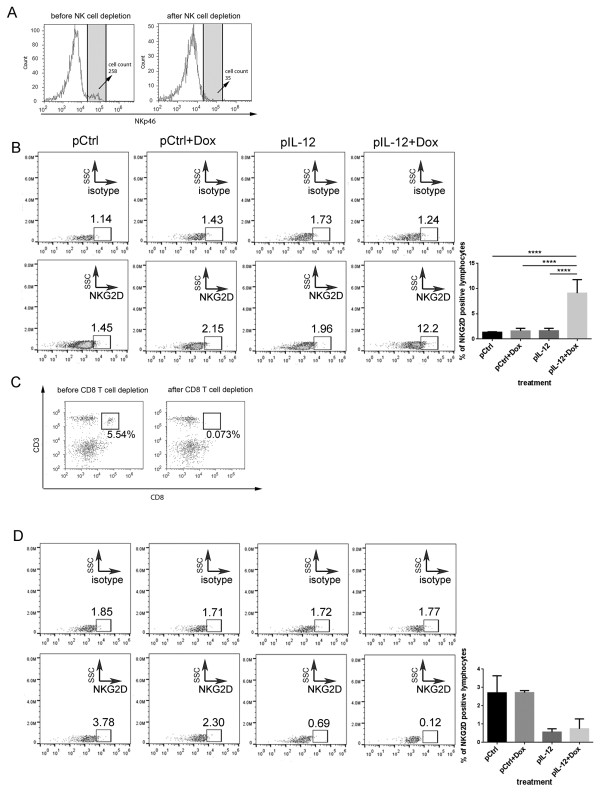Figure 2.
NKG2D expression in NK cell–depleted and CD8+T cell–depleted tumor-bearing mice. Groups of tumor-bearing BALB/C mice received one of the four standard treatments (control DNA, Dox plus control DNA, IL-12, or Dox plus IL-12; n = 3 per treatment) and also were subjected to NK cell or CD8+T cell depletion. (A) Efficiency of NK cell depletion. Splenocytes were collected and stained with NKp46 to confirm NK cell depletion. (B) NKG2D induction in total lymphocytes after NK cell depletion. Splenocytes were collected and stained with anti-mouse PE-Cy7 NKG2D or isotype control antibody, and the level of NKG2D induction was determined using flow cytometry. (C) The efficiency of CD8+T cell depletion. Splenocytes were collected and stained with PE CD3ϵ and FITC CD8 antibodies to confirm CD8+T cell depletion. (D) NKG2D expression in total lymphocytes by the indicated treatments after CD8+T cell depletion. Splenocytes were collected and stained with PE-Cy7 anti-mouse NKG2D or isotype control antibody, and the level of NKG2D was determined by using flow cytometry. All of the bar graphs represent the percentage of NKG2D receptor–positive cell population, as mean ± SEM (n = 3, ****P < 0.0001).

